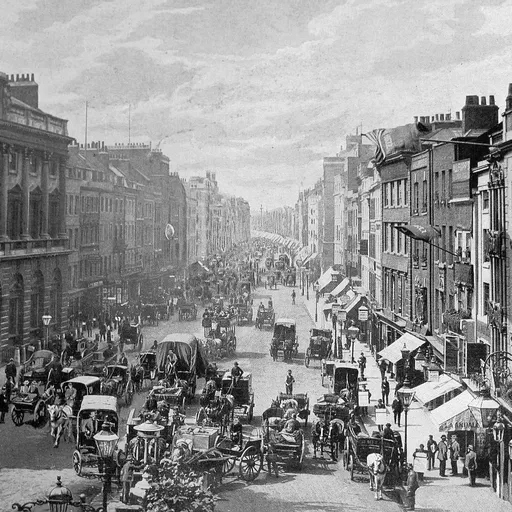Ancient Greece – background information
The period we know as ancient Greece actually spanned over 2000 years – as long as from the birth of Christ to the present day. During this time enormous social, cultural and economic changes took place. If pupils are asked to reflect on the huge contrasts which occurred in British history from the Romans to the Second World War, they might begin to gain a perspective on just how significant this time span is. However, in terms of much of the work which is carried out in school, when we talk about ancient Greece we are really focussing on both a relatively brief time (the 5th century BC), and a single place (Athens).
We call this the Classical period and it is often referred to as the ‘golden age’ because of the evidence for its achievements. Some key events during this period included:
- Conflicts between the Persians and the Greeks.
- Pre-eminence of Athens, from where most of our evidence comes.
- Development of democracy under the Athenian leader Pericles.
- Major developments in culture, the arts and learning, which retain their influence on life today:
- Rebuilding of structures on the Acropolis, including the Parthenon.
- Destructive effect of the long war between Athens and Sparta, and their allies (the Peloponnesian War).
The term ‘ancient Greece’ can also be misleading for the image it conveys of a single nation. The people who lived at this time would not have thought of themselves as ‘Greeks’. Their sense of identity came from one of the many city states to which they belonged, each of which had its own clearly defined way of life. Nevertheless, there were a number of unifying features, in particular a common language. By the 5th century it was customary to refer to people who did not speak Greek as barbaroi, or barbarians; that is people whose language sounded like bar-bar to those who did not understand it. People from ancient Greece also worshipped the same gods and shared the same myths and legends. They were capable of coming together for important events, such as the Olympic games, and uniting against a common foe, as in the wars with Persia.
Although ancient Greece might seem to be long ago and far away, there are many links with the present day which can make the period relevant and meaningful today. Our language, political system, literature and ways of looking at the world can be linked to the Greek legacy.
Sources of evidence
Our knowledge of ancient Greece comes from a wide variety of sources, including architectural, archaeological and written evidence. These include:
- Myths and legends; for centuries part of an oral tradition, and only written down much later.
- Literary sources, such as the stories of Homer, the plays of Sophocles, the histories of Herodotus, and the work of other ancient writers.
- Ruins of buildings, which we can see today, such as the Parthenon.
- Archaeological evidence from excavations carried out at famous sites like Olympia, burials and settlements. Inscriptions.
- Artefacts from everyday life.
- Works of art, especially sculptures of famous people, heroes and gods, and the illustrations on Greek pottery.
As Greek cities became over-populated, new colonies were established across the Mediterranean. Trading links also brought the Greeks into contact with other civilisations, such as ancient Egypt, and this led to the exchange of ideas as well as goods.
Fish was an important part of the Greek diet, as meat was too expensive for most people, except for special occasions. Working people, the poor and slaves are under-represented in the evidence for ancient Greece as they were unable to write down their thoughts and experiences for themselves.
Ancient Greek Women and Children
Water was usually collected by poor women or slaves and spinning and weaving were also women’s tasks, and carried out in every household. Aristocratic women led very restricted lives, with no political rights and little freedom of movement. They spent much of their time at home, in their own part of the house, where spinning and weaving were seen as an integral part of their role.
Spartan women, by contrast, led much freer lives. Girls took part in athletic training, like boys. This was intended to make them strong mothers in order to produce good Spartan soldiers.
Attitudes towards childhood could be harsh. In Sparta, babies deemed to be weak or infirm were thrown over a cliff. In Athens, too, babies not accepted by the household were exposed in an isolated place and left to die. This was much more likely to be the case with girls than boys.
What made ancient Greek fighters so powerful?
During the 5th century, the Greeks were at war with the Persians. Significant battles were fought on land at Marathon in 490 and Thermopylae in 480, and at sea at Salamis in 480, which resulted in major victories for the Greek army and navy.
The hoplite was the supreme fighting soldier of the period and wore armour for battle; a cuirass (linen reinforced with bronze) to protect the body, bronze greaves to protect the legs, and a bronze helmet with nose and cheek guards. Weapons were a long spear (around two metres) and a sword with a scabbard. Warriors also carried round, leather shields, weighing about 8kg.
Compared with the heavily armoured hoplite, the Persian soldier had much less protection (their cavalry also rode their horses without stirrups).
In battle, units of hoplites would form shield walls and use their long spears to withstand a cavalry charge. At the battle of Marathon, the high ground, held by the Greeks, was unsuitable for cavalry, putting the Persian army at a disadvantage.
Ancient Greek Navy
The trireme was the most effective warship of its time. Significant features included three rows of oarsmen (not slaves), oars for steering at the stern, a bronze battering ram and a painted eye. Greek warships would ram the enemy to inflict as much damage as possible.
Greek Temples
The Athenians were forced to abandon their city during the Persian invasion, when the buildings on the Acropolis were destroyed. It was in the second half of the 5th century BC that the Parthenon, and the other great buildings that we can see today on the Acropolis, were built. The Parthenon was a temple dedicated to Athene, the patron goddess of Athens. It was built to house the magnificent statue of the goddess, made by Phidias, who also made the statue of Zeus at Olympia. The Athene was about 10 metres tall, and covered in ivory, gold and precious stones and in her hand she held Nike, the goddess of victory.
Ancient Greek Theatre
Ancient Greek drama (from the Greek word meaning ‘to do’ or ‘to act’) grew out of religious ceremonies. The first theatres were built in the open-air of wood, none of which have survived. Later, theatres were built of stone, like this one at Epidaurus which dates from the beginning of the 3rd century BC. It is 118 metres in diameter. Banks of seats were built into the hillside and could accommodate an audience of 14,000. The acoustics are excellent, and enabled all the actors to be heard throughout the theatre.
Actors wore masks so that everyone could see their faces. Different characters wore masks with the appropriate expressions: funny faces for comedy and serious faces for tragedy.
Visit Ancient Greece | Starbeck Education for 100's of replica Ancient Greek Artefacts available to buy.
More resources to study the Ancient greeks can be found at Ancient Greece (wildgoose.education) or Ancient Greece Topic Pack | Ancient Greece | YPO. Or for a History Workshop on Ancient Greece try (1) The Specialists | Leicester | Facebook
Extracted from original text written by Jayne Woodhouse on behalf of Wildgoose Education Ltd










